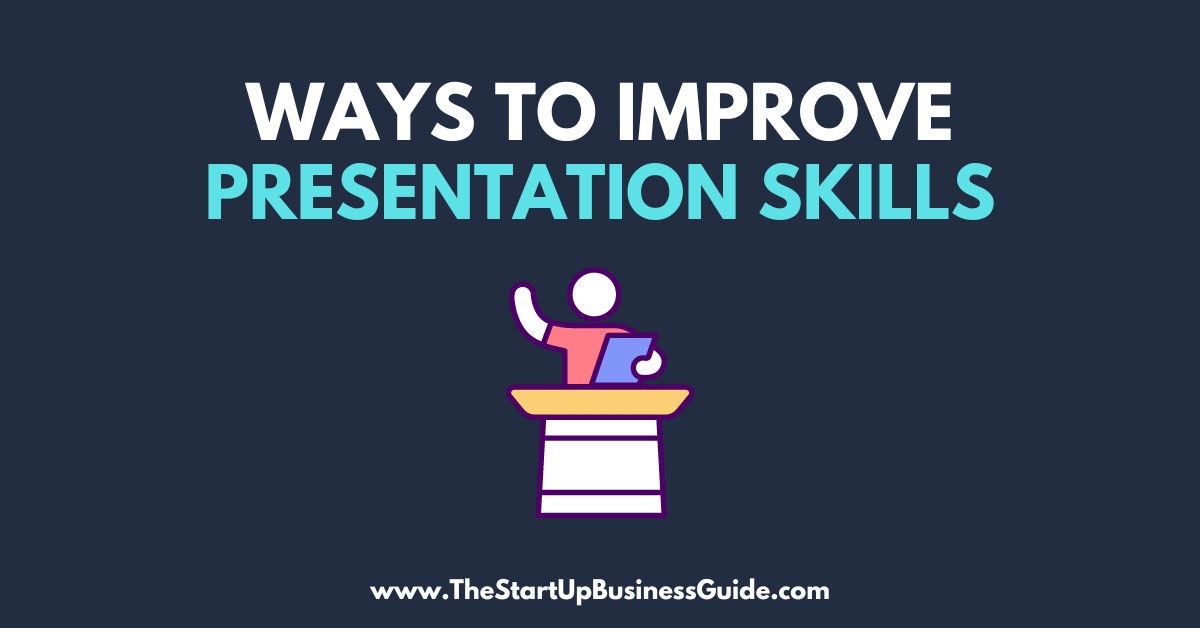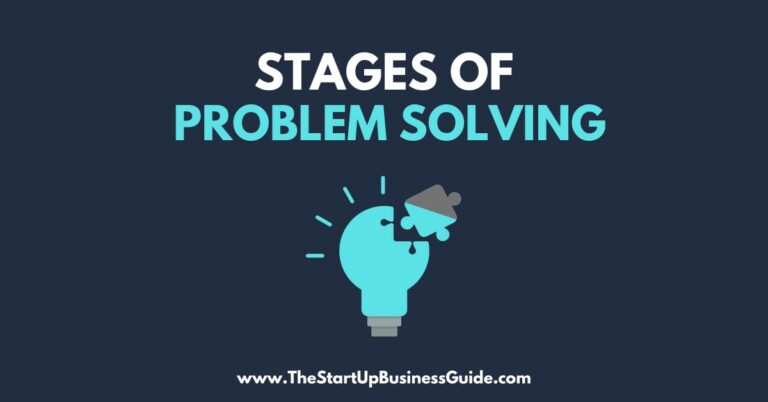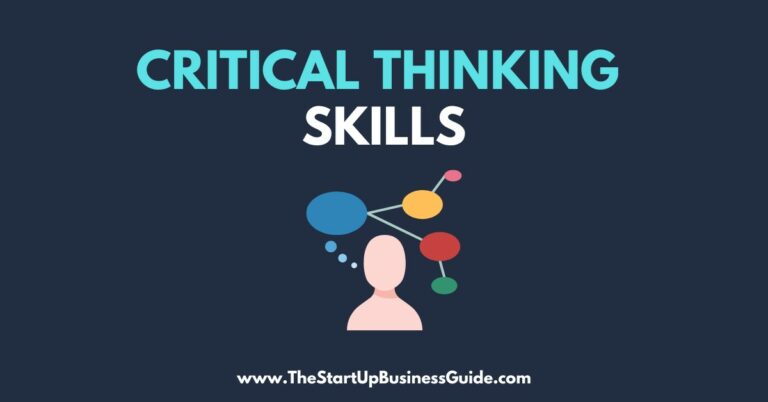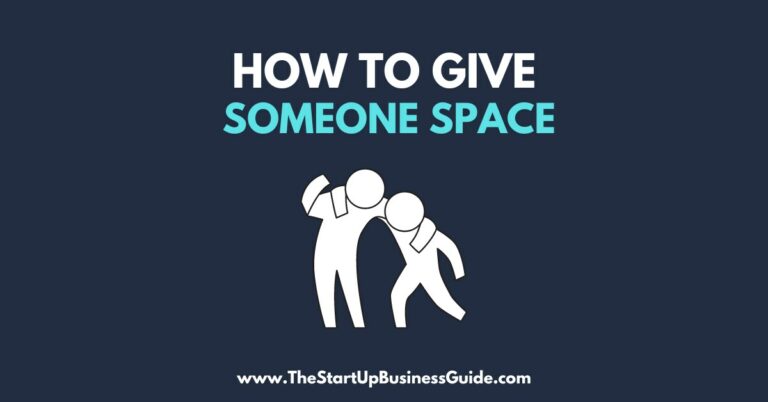12 Ways to Improve Your Presentation Skills

When it comes to the business world, presentations are a crucial part of the job.
Whether you’re in a meeting with clients, giving a speech to a large audience, or even just presenting a project to your team, having strong presentation skills can make all the difference in how your message is received.
In this blog post, we’re going to give you excellent tips to help you improve your presentation skills and make a lasting impression.
Preparation
1. Research and gather information – Before you start to create your presentation, make sure you have all the information you need to make your point. This could include statistics, data, and examples.
2. Create a clear and concise message – Once you have your information, it’s important to narrow it down to a clear and concise message. This will help keep your audience focused and engaged.
3. Practice, practice, practice – The more you practice, the more comfortable you’ll feel when it’s time to give your presentation. You’ll also be able to catch any mistakes or areas that need improvement.
Delivery
4. Speak clearly and confidently – When you’re giving your presentation, make sure you speak clearly and confidently. This will help your audience understand what you’re saying and be more likely to believe you.
5. Use nonverbal cues effectively – Nonverbal cues like body language, eye contact, and tone of voice can be just as important as the words you’re saying. Make sure you’re using them effectively to help get your message across.
6. Use visual aids effectively – Visual aids like slides, videos, and charts can be a great way to help your audience understand your message. However, it’s important to use them effectively so they don’t distract from what you’re saying.
Engagement
7. Encourage audience participation – When you’re giving a presentation, it’s important to make sure your audience is engaged. Encourage them to ask questions and participate in the discussion.
8. Use storytelling and humor – Storytelling and humor can be a great way to make your presentation more engaging and memorable.
9. Address any questions or concerns – If there are any questions or concerns from your audience, make sure to address them. This will help them understand your message better and also show that you’re open to feedback.
Post-Presentation
10. Follow up with audience members – After your presentation, make sure to follow up with any audience members who had specific questions or concerns.
11. Reflect on what went well and areas for improvement – Take the time to reflect on what went well in your presentation and areas where you could improve.
12. Continuously work on and improve your presentation skills – Remember, improving your presentation skills is a continuous process, always be open to feedback and be willing to try new things.
Frequently Asked Questions on Presentation Skills
Q. How do I prepare for a presentation?
Preparation is key to delivering a successful presentation.
Start by researching your topic thoroughly and organizing your information in a logical and easy-to-understand format.
Prepare an outline or script, and practice delivering your presentation several times in front of a mirror or with a small group to get feedback.
Make sure to rehearse your transitions and practice the use of any visual aids you plan to use.
Be familiar with the space where you will be presenting and arrive early to set up and test any equipment you need.
Q. What are some tips for reducing stage fright?
It’s normal to feel some nerves when giving a presentation, but there are ways to reduce stage fright.
One way is to practice, practice, practice. The more familiar you are with your material, the more comfortable you will feel.
It’s also helpful to visualize yourself giving a successful presentation.
Another tip is to focus on your audience and remember that they want you to succeed.
Speak clearly and make eye contact with different members of your audience to build a connection.
Finally, take deep breaths and remind yourself that you are prepared and capable.
Q. How can I make sure my audience stays engaged throughout my presentation?
One way to keep your audience engaged is to make your presentation interactive by asking questions, encouraging participation, and providing opportunities for them to ask questions.
Using visual aids can also help to break up the presentation and make it more interesting.
Further, try to use a variety of different types of content, such as images, videos, and infographics, to keep your audience’s attention.
Speak in a conversational tone and use humor if appropriate.
Q. How do I structure my presentation for maximum impact?
A strong structure is essential for a successful presentation.
Start with an engaging introduction that captures your audience’s attention and gives an overview of what they can expect.
Use clear and concise main points, with supporting information and examples.
Use signposts to indicate the progression of your presentation and to help your audience follow along.
Conclude by summarizing your main points and providing a call to action.
Q. How can I use visual aids effectively?
Visual aids are a great way to enhance your presentation and help your audience understand your message better.
Choose visual aids that are relevant and add value to your presentation.
Avoid using too many visual aids, as this can be overwhelming for your audience.
Make sure that your visual aids are clear and easy to read, and that they are properly set up and working before you begin your presentation.
Q. How can I make sure my delivery is polished and professional?
To deliver a polished and professional presentation, practice your delivery, focusing on your posture, gestures, and facial expressions.
Speak clearly and at a moderate pace, and use appropriate emphasis and inflection.
Use pauses and silence effectively.
Avoid filler words such as “um” and “ah”.
Dress professionally, and have a confident attitude.
Q. How do I handle questions and audience interaction during my presentation?
Allow time at the end of your presentation for questions and interaction.
Encourage your audience to ask questions, and be prepared to answer them clearly and concisely.
If you don’t know the answer to a question, be honest and let them know you will look into it.
If you receive a challenging question, stay calm and respectful.
If you’re not sure how to answer, ask the questioner to clarify or to provide more information.
Q. How can I make sure my message is clear and concise?
Being clear and concise is essential to delivering an effective presentation.
Start by identifying your main message and focus on it throughout your presentation.
Use simple and easy-to-understand language, avoid jargon and technical terms that your audience may not be familiar with.
Use examples and anecdotes to illustrate your points.
Organize your information in a logical and easy-to-follow format.
Use visual aids to supplement your message and make it more memorable.
Q. What are some common mistakes to avoid when giving a presentation?
Some common mistakes to avoid when giving a presentation include not being prepared, speaking too fast or too slow, using too much technical jargon, relying too heavily on visual aids, failing to engage the audience, not allowing enough time for questions, and not practicing beforehand.
Additionally, it is important to avoid using too much text on slides and not to read from the slide or from notes.
Q. How can I follow up after my presentation to maintain engagement with my audience?
Following up after your presentation is an important step in maintaining engagement with your audience.
Send a thank-you note or email to your audience, summarizing key points and highlights from the presentation.
Share any additional resources or materials that may be of interest to them.
Encourage them to reach out to you with any questions or feedback.
Connect with your audience on social media, and continue the conversation.
Furthermore, you can also share the presentation deck or video recording of the presentation with the audience to help them recall the key points.
Conclusion
In conclusion, presentation skills are crucial in today’s workforce.
By following these 12 tips, you’ll be able to improve your skills and make a lasting impression.
Remember to research and gather information, create a clear and concise message, practice, speak clearly and confidently, use nonverbal cues effectively, use visual aids effectively, encourage audience participation, use storytelling and humor, address any questions or concerns, follow up with audience members, reflect on what went well and areas for improvement, and continuously work on and improve your presentation skills.
In addition to these tips, it’s important to remember that every presentation is different and will require its own unique approach.
Be open to feedback and be willing to try new things.
For more resources on improving your presentation skills, you can check out books like “Presentation Zen” by Garr Reynolds, or “Made to Stick” by Chip Heath and Dan Heath.
There are also many online tutorials and courses that can help you improve your skills.
In the end, the most important thing is to be confident in yourself and your abilities.
With practice and dedication, you’ll be able to give great presentations and make a lasting impression on your audience.






